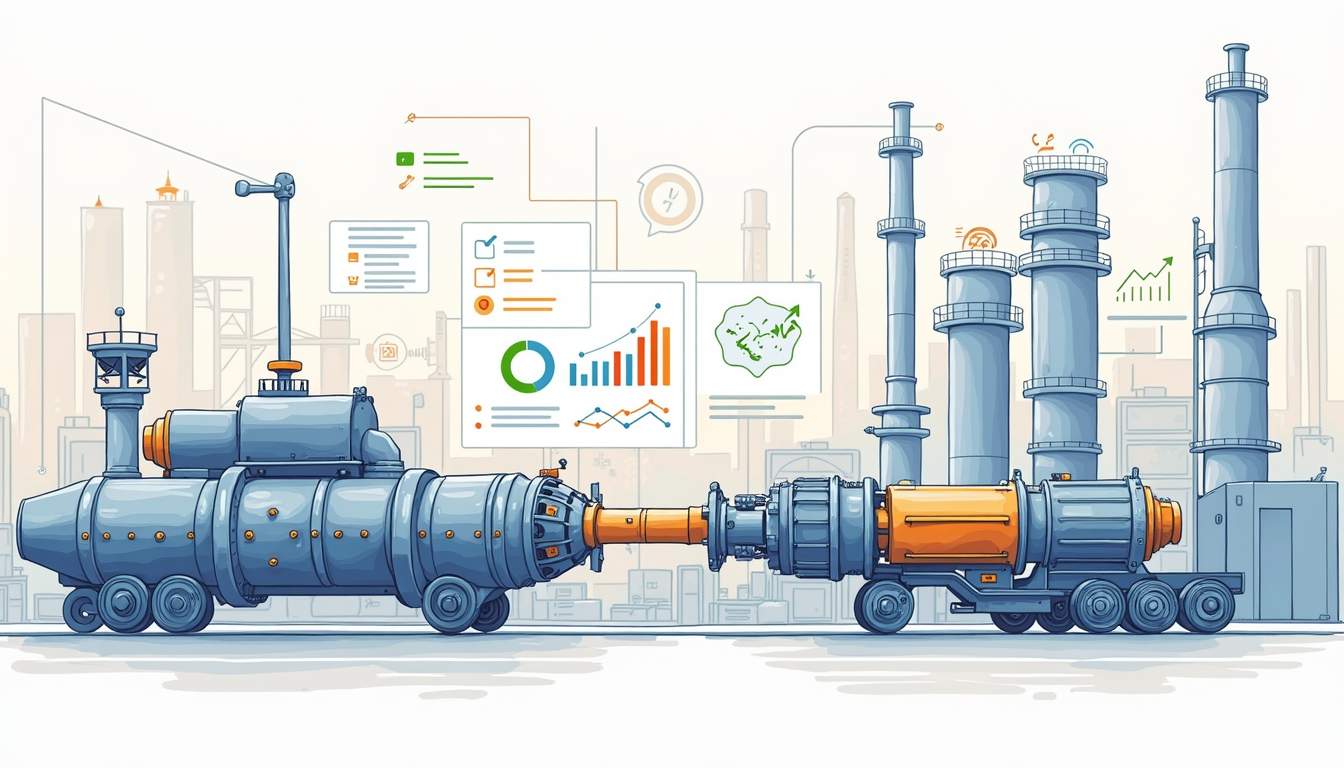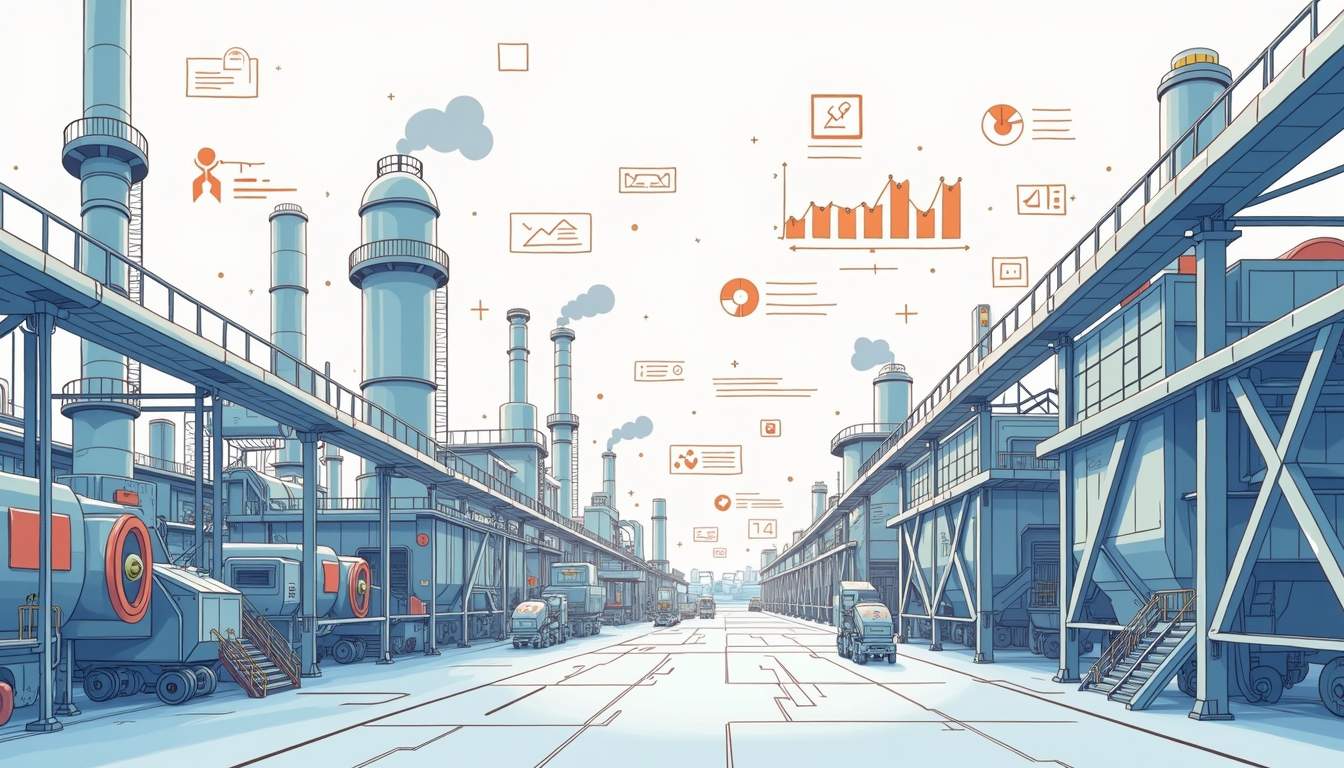As industries evolve in the wake of the fourth industrial revolution, the integration of advanced technologies into manufacturing processes is becoming increasingly crucial. One of the most significant advancements is predictive maintenance, a strategy that leverages data analytics and machine learning to predict equipment failures before they occur. This approach not only enhances operational efficiency but also significantly improves reliability across various sectors.
Understanding Predictive Maintenance
Predictive maintenance refers to the practice of using data-driven insights to anticipate equipment failures and schedule maintenance activities accordingly. Unlike traditional maintenance strategies, which often rely on reactive or scheduled maintenance, predictive maintenance focuses on real-time data analysis to identify potential issues before they escalate.

The Role of Data in Predictive Maintenance
Data is the cornerstone of predictive maintenance. Sensors embedded in machinery collect vast amounts of data regarding performance metrics, such as temperature, vibration, and operational speed. This data is then analyzed using advanced algorithms to identify patterns and anomalies that may indicate impending failures.
Machine learning models can process this data at an unprecedented scale, allowing for more accurate predictions. By continuously learning from new data, these models can adapt to changing conditions and improve their predictive capabilities over time. Furthermore, the integration of Internet of Things (IoT) technology has revolutionized the data collection process, enabling real-time monitoring of equipment across multiple locations. This connectivity not only enhances the volume of data available for analysis but also allows for immediate alerts to maintenance teams, ensuring that issues can be addressed swiftly before they lead to significant downtime.
Benefits of Predictive Maintenance
The benefits of adopting predictive maintenance strategies are manifold. Firstly, it significantly reduces downtime. By predicting when a machine is likely to fail, companies can schedule maintenance during non-peak hours, minimizing disruptions to production.
Secondly, predictive maintenance extends the lifespan of equipment. Regular maintenance based on actual condition rather than arbitrary schedules ensures that machines are serviced only when necessary, preventing unnecessary wear and tear. This proactive approach not only enhances equipment reliability but also fosters a culture of continuous improvement within organizations, as teams become more engaged in monitoring and optimizing their operational processes.
Lastly, this approach can lead to substantial cost savings. By avoiding unplanned outages and optimizing maintenance schedules, organizations can reduce operational costs and improve their bottom line. Additionally, the data generated through predictive maintenance can provide valuable insights into operational efficiency, allowing businesses to make informed decisions about future investments in technology and equipment. As industries continue to embrace digital transformation, the role of predictive maintenance will only grow, becoming an essential component of modern asset management strategies.
The Technology Behind Predictive Maintenance
The implementation of predictive maintenance relies heavily on various technologies that facilitate data collection, analysis, and visualization. Understanding these technologies is essential for grasping how predictive maintenance operates within Industry 4.0.
IoT Sensors and Devices
Internet of Things (IoT) sensors play a pivotal role in predictive maintenance. These devices are installed on machinery to monitor performance in real-time. They collect data on various parameters, which is then transmitted to a centralized system for analysis.
IoT sensors are not only capable of monitoring equipment but can also provide insights into environmental conditions that may affect performance. This comprehensive data collection is vital for accurate predictions and timely interventions.
Data Analytics and Machine Learning
Once data is collected, it must be analyzed to extract actionable insights. Advanced data analytics tools and machine learning algorithms are employed to process and interpret the data. These technologies can identify trends, detect anomalies, and predict future failures with remarkable accuracy.
Machine learning models can be trained using historical data to recognize patterns associated with equipment failures. This predictive capability enables organizations to make informed decisions regarding maintenance schedules and resource allocation.
Cloud Computing and Big Data
The vast amounts of data generated by IoT sensors necessitate robust storage and processing capabilities. Cloud computing provides a scalable solution for managing big data associated with predictive maintenance. By leveraging cloud platforms, organizations can store, analyze, and access data from anywhere, facilitating real-time decision-making.
Moreover, cloud computing allows for the integration of various data sources, enhancing the overall predictive capabilities of maintenance systems. This interconnectedness is a hallmark of Industry 4.0, where data flows seamlessly across different systems and platforms.
Challenges in Implementing Predictive Maintenance
While the benefits of predictive maintenance are clear, implementing such a strategy is not without its challenges. Organizations must navigate several obstacles to fully realize the potential of predictive maintenance in their operations.

Data Quality and Integration
One of the primary challenges is ensuring data quality. Inaccurate or incomplete data can lead to faulty predictions, undermining the effectiveness of predictive maintenance strategies. Organizations must invest in robust data validation processes to ensure that the information being analyzed is reliable.
Additionally, integrating data from various sources can be complex. Different machines may use different data formats, making it challenging to consolidate information into a single platform for analysis. Establishing standard protocols for data collection and integration is essential for overcoming this hurdle.
Skill Gaps and Training
Another significant challenge is the skill gap within organizations. Implementing predictive maintenance requires expertise in data analytics, machine learning, and IoT technologies. Many organizations may lack personnel with the necessary skills to effectively manage and interpret the data generated by predictive maintenance systems.
Investing in training programs and hiring skilled professionals is crucial for bridging this gap. Organizations must prioritize upskilling their workforce to ensure they can leverage predictive maintenance technologies effectively.
Cost of Implementation
The initial investment required for implementing predictive maintenance can be substantial. Organizations must consider the costs associated with acquiring IoT sensors, data analytics tools, and cloud computing services. While the long-term savings can be significant, the upfront costs can deter some companies from adopting predictive maintenance strategies.
To mitigate this challenge, organizations can start with pilot projects to demonstrate the value of predictive maintenance before committing to full-scale implementation. This phased approach allows for gradual investment and risk management.
Case Studies: Success Stories in Predictive Maintenance
Many organizations have successfully implemented predictive maintenance strategies, showcasing the transformative impact of this approach on operational efficiency and reliability.
Manufacturing Sector
In the manufacturing sector, a leading automotive manufacturer adopted predictive maintenance to monitor its assembly line machinery. By implementing IoT sensors and advanced analytics, the company was able to predict equipment failures with 90% accuracy.
This proactive approach led to a 30% reduction in unplanned downtime and a significant increase in overall productivity. The manufacturer also reported a notable decrease in maintenance costs, as repairs were performed only when necessary.
Energy Sector
In the energy sector, a major utility company implemented predictive maintenance for its wind turbines. By analyzing data from sensors installed on the turbines, the company could predict component failures before they occurred.
This initiative resulted in a 25% reduction in maintenance costs and improved turbine availability. The company also enhanced its ability to meet energy demands, as turbines were kept operational for longer periods, ultimately benefiting consumers.
Aerospace Industry
The aerospace industry has also embraced predictive maintenance, particularly in aircraft maintenance. Airlines are utilizing predictive analytics to monitor engine performance and predict maintenance needs based on real-time data.
This strategy has led to increased flight safety and reduced maintenance turnaround times. Airlines have reported improved operational efficiency and customer satisfaction as a result of fewer delays and cancellations.
The Future of Predictive Maintenance
As technology continues to advance, the future of predictive maintenance looks promising. Several trends are emerging that are likely to shape the evolution of this strategy in the coming years.

Artificial Intelligence and Advanced Analytics
Artificial intelligence (AI) is set to play a pivotal role in the future of predictive maintenance. As machine learning algorithms become more sophisticated, they will be able to analyze data with greater precision and provide even more accurate predictions.
AI-driven predictive maintenance systems will not only identify potential failures but also recommend optimal maintenance strategies based on historical data and real-time conditions. This level of intelligence will further enhance operational efficiency and reliability.
Integration with Augmented Reality
Augmented reality (AR) is another technology that could revolutionize predictive maintenance. By overlaying digital information onto the physical world, AR can assist technicians in performing maintenance tasks more effectively.
For instance, AR can provide real-time data visualizations and step-by-step instructions, enabling technicians to address issues quickly and accurately. This integration of AR with predictive maintenance systems could streamline maintenance processes and reduce the time required for repairs.
Wider Adoption Across Industries
As the benefits of predictive maintenance become more widely recognized, its adoption is expected to expand across various industries beyond manufacturing and energy. Sectors such as healthcare, transportation, and agriculture are beginning to explore the potential of predictive maintenance to enhance efficiency and reliability.
This broader adoption will lead to increased innovation and collaboration among industries, driving advancements in predictive maintenance technologies and practices.
Conclusion
Predictive maintenance is at the forefront of Industry 4.0, offering organizations a powerful tool to enhance efficiency and reliability. By leveraging data analytics, IoT technologies, and machine learning, companies can anticipate equipment failures and optimize maintenance schedules, resulting in significant cost savings and improved operational performance.
While challenges remain in implementing predictive maintenance strategies, the success stories from various sectors highlight the transformative potential of this approach. As technology continues to evolve, the future of predictive maintenance looks bright, promising even greater advancements in efficiency and reliability across industries.
In a world where operational excellence is paramount, predictive maintenance stands as a beacon of innovation, guiding organizations toward a more efficient and reliable future.
Take Control of Your Predictive Maintenance Journey with Cybersort
Embrace the future of operational efficiency with Cybersort at your side. Our solutions offer you the clarity and command you need over your digital infrastructure, ensuring your plant operates at peak performance. With Cybersort, you’re not just adopting predictive maintenance; you’re enhancing safety, cybersecurity, and embarking on a transformative digital journey. Ready to revolutionize your maintenance strategy and gain a competitive edge? Book a discovery call today and unlock the full potential of Industry 4.0 with Cybersort.


